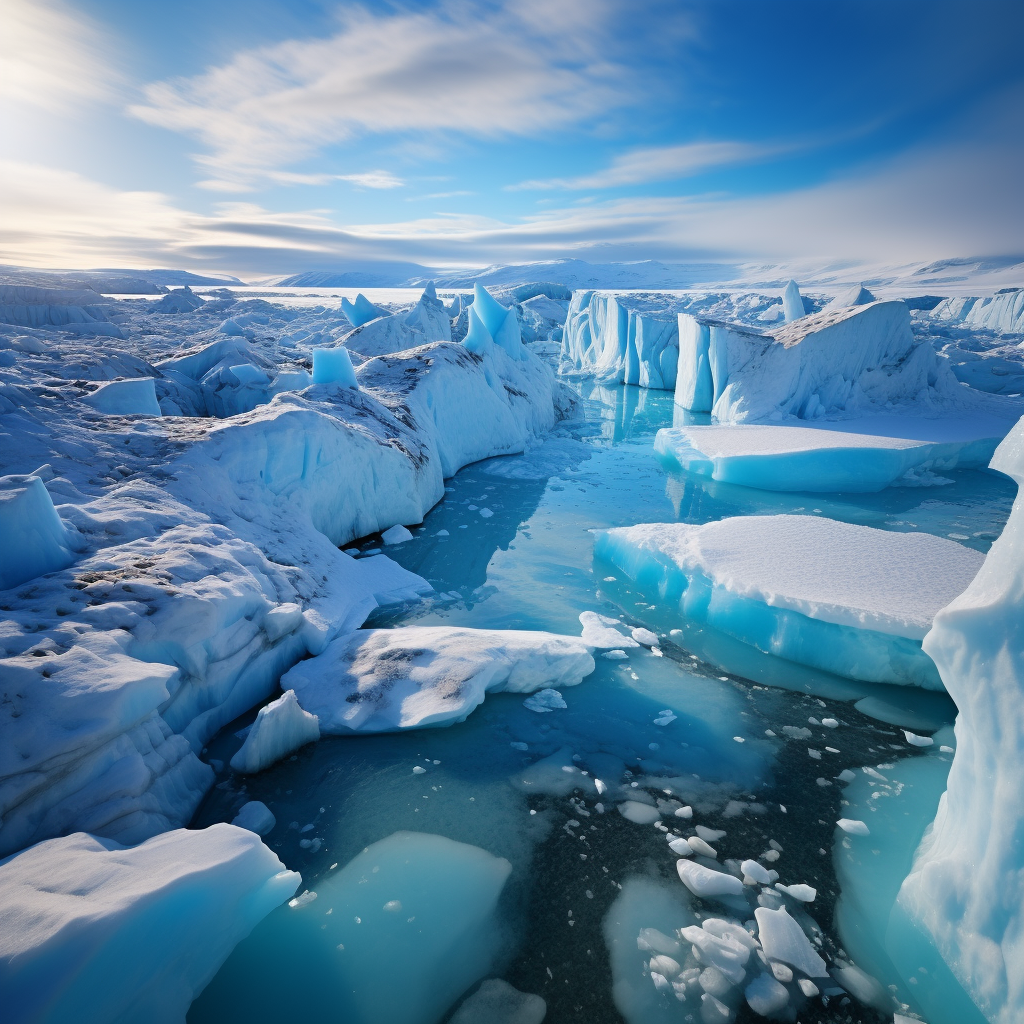August 31, 2023
The Melting Crisis – Greenland’s Ice Sheet & Global Climate Threat
Book a Demo
Greenland, known for its massive ice sheet, is a region of the planet that is in grave danger due to climate change. As a result of rising temperatures, Greenland is losing an average of 270 gigatons of ice annually. This significant loss is a stark reminder of the vulnerability of the earth’s cold regions to global warming.
The Arctic region, which includes Greenland, holds the dubious distinction of being the fastest-warming area on our planet. Since 1979, the region’s temperatures have already escalated by 3 degrees Celsius. This rapid warming is a serious cause for concern, particularly due to the role the arctic plays in moderating global climate.
Greenland’s ice sheet is not just melting; it’s contributing more to sea level rise than any other ice mass. Annually, it’s responsible for increasing sea levels by about three-quarters of a millimeter. This might seem insignificant, but over time, these increases can have catastrophic consequences for low-lying coastal regions worldwide.
The future of Greenland’s ice sheet looks bleak. Even if all greenhouse gas emissions were to cease immediately, projections still indicate that Greenland’s ice sheet is set to lose more than 110 trillion tons of ice by 2100. This projection dramatically underscores the immense challenges presented by climate change.
Adding to this growing crisis, scientists have discovered evidence that suggests Greenland was almost completely ice-free within the last 1.1 million years. This historical precedent introduces the alarming possibility that history could repeat itself, leading to a Greenland that is entirely devoid of ice in the future.
The Arctic is already experiencing severe consequences of global warming, including melting glaciers and thawing permafrost. Alarmingly, global warming is occurring at twice the rate in the Arctic compared to the rest of the world.
The melting ice in the Arctic has implications that are felt globally. Rising sea levels and extreme weather events are just some of the consequences. Additionally, local wildlife such as polar bears and seals are being threatened, their habitats disappearing with each passing year.
There is an urgent call to action that cannot be ignored. We need to limit global warming emissions to protect the Arctic and prevent further drastic changes in global climate patterns. The fate of Greenland’s ice sheet, and indeed our planet’s future, hinges on our actions today. The time for decisive action is now.



